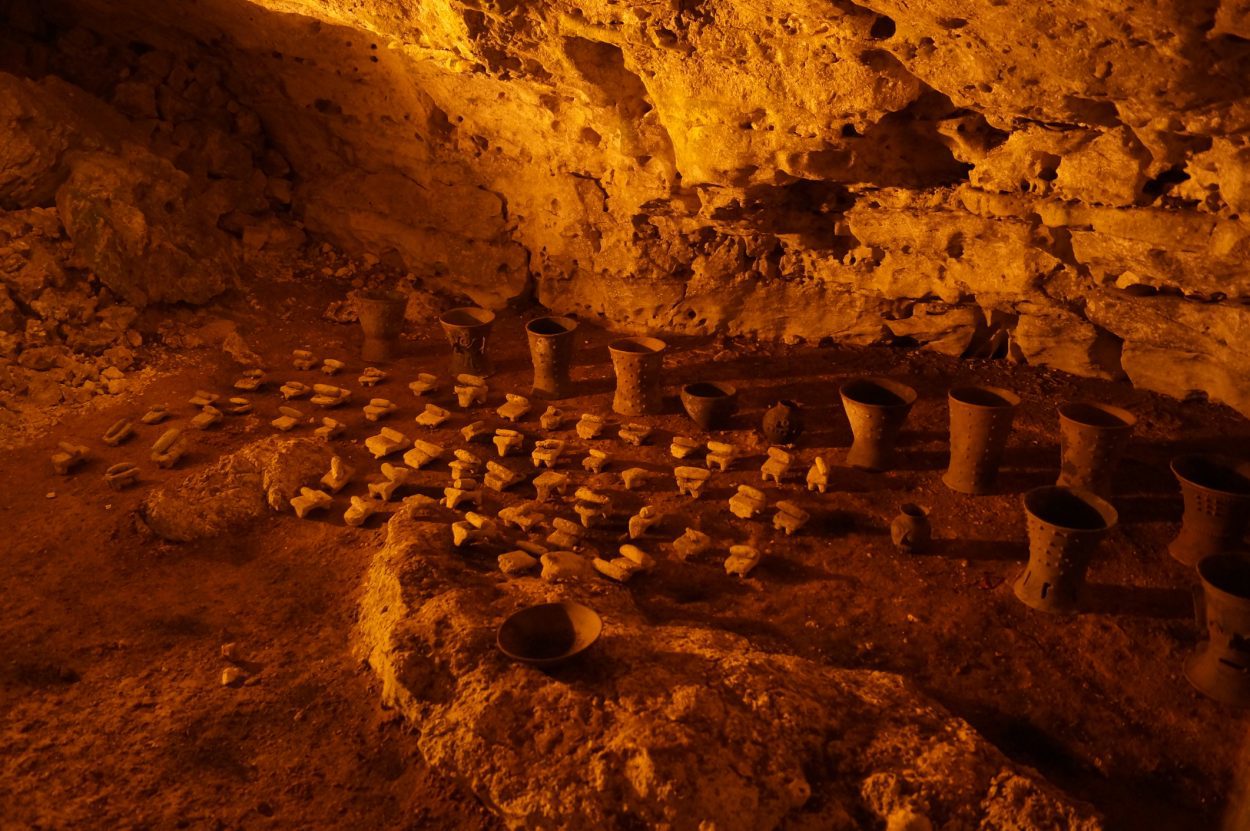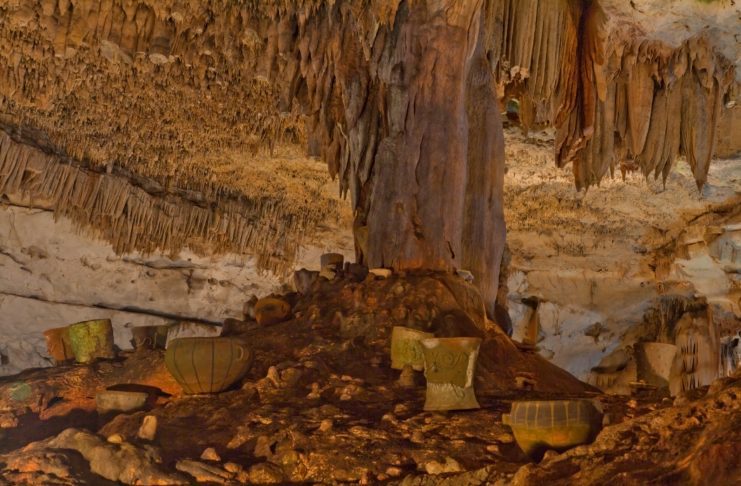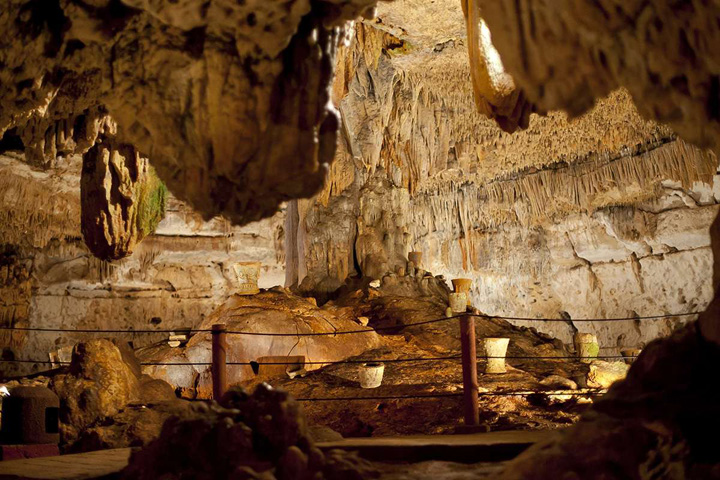Balankanche, the sacred cave of the Mayans, is just a few miles further from Chichen Itza, one of the 7 wonders of the world, in the Yucatan Peninsula. Like most ruins of this area, they were used for religious ceremonies during the Maya-Toltec period.
The cave wasn’t easy to find, surrounded by a fructiferous jungle, Balankanche was finally discovered in 1905, but it wasn’t until 1959 that archaeologists discovered its whole extent and a series of hidden passages. The caves are a sanctuary dedicated to their god Chaac, the god of rain. Chaac is one of the most important gods in Mayan mythology. Since water gives life to everything, the Mayans recognized its importance and made sacrifices to this important god. Despite being found so many years ago, the Balankanche caves have been open for only around 24 years.
Balankanche is known to be the most important underground archaeological zone in the region. These extraordinary caves have an extent of more than 2 km (1.2 miles), and it makes visitors descend 10 meters (32 feet) to witness what is one of nature’s greatest underground wonders. The beauty of Balankanche is that no men created them, the only way men contributed to it was by the artifacts and sacrifices made inside.

In this underground route, you’ll find Balam’s throne in which Mayan people honor him and make rituals around him. Further in the cave, an almost dry lake will uncover, and then you’ll see small vessels and pieces of jade, which symbolize the offerings that were given at that time.
The route is not always narrow, you’ll happen to encounter spacious cameras of approximately 10 meters (32 feet) high and 25 meters (82 feet) wide. When Archaeologists first discover the cave of Balankanche, along with the vessels and jade pieces, they also found jewelry, jaguar-shaped jade, handprints on the walls, small plates, and figures in the shape of their god Chaac.
Stalactites and stalagmites are the ultimate natural decor for underground caves, they are witnesses of what was and what is. Stalactites and stalagmites have grown slowly throughout the years, enhancing the natural beauty and keeping the mysteries of the cave to themselves. Do beware and be cautious with your head since the cave’s height changes and stalactites are hanging everywhere around.
Stalactites are icicle-shaped formations that hang from the ceiling of a cave and are produced by the precipitation of minerals from water dripping through the cave ceiling. While stalagmites are upward-growing mounds of mineral deposits that have precipitated from water dripping onto the floor of a cave. If you have never since these natural phenomena, be amazed at what comes next.

Right in the main cave, in the middle of the vault, a stalactite stands out. Bigger than the rest of the stalactites, a column that showcases the union between stalactites and stalagmites. It’s similar to a great Ceiba, the Sacred Mayan Tree, and it’s called “the sacred Ceiba that grows from the inside of the Earth”. You can check out the blog we wrote about the legends of the Mayans, there we explain what the Ceiba meant for them. In general, Mayans believed the universe to be divided between the sky (where gods lived), earth (where humans lived), and the underworld (spirits reside). The Ceiba’s leaves, trunk, and roots symbolized such divisions. The Mayans also believed the caves were portals to Xibalba, the underworld where Mayan dead gods rein.
There are also more than 100 incense burners to be found in the cave. Archaeologists have noted that these burners have hundreds of years and it’s probable that they were used for rituals and ceremonies. Some lamps and ceramic plates were found to be made by the last Maya-Toltec tribes.
When you finish the tour, you can find a nice botanical garden. Find also information about the native flora and the medicinal uses of the trees and plants. A museum will also be waiting outside, featuring large photographs taken during the exploration of the caves. Also on display are texts about modern-day Maya ceremonies called Ch’a Chaac, which continue to be held in all the villages on the Yucatán Peninsula during times of drought. It consists mostly of praying and making numerous offerings of food to the rain god Chaac. A recent expedition discovered additional artifacts submerged underwater as well.

For all of you, not Spanish speakers, there are guided tours in different languages, but they have specific times for each tour. English is at 11 am, 1 pm, and 3 pm; Spanish is at 9 pm, noon, 2 pm, and 4 pm; and French is only at 10 am.
The tour shouldn’t take long, but it’s not recommended for people with claustrophobic tendencies.
Balankanche also has a light and sound show, where they narrate all the history and let you have a great spectacle.
Now that you know more about Balankanche, don’t forget to stop by on your next visit to the Yucatan Peninsula!